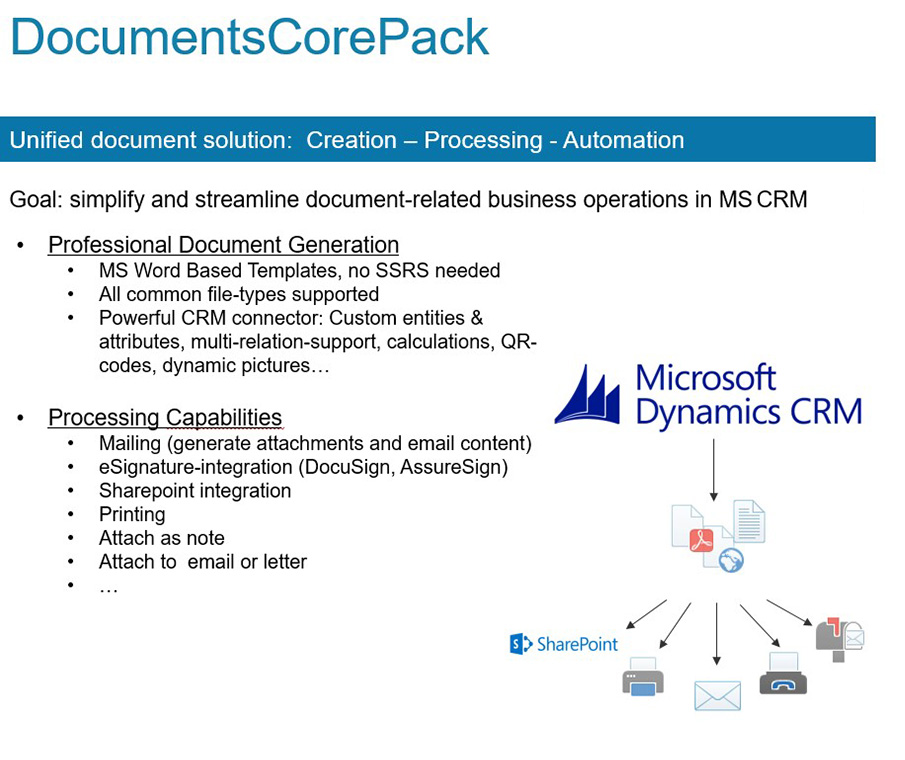Microsoft Dynamic Crm Database Schema Example

Feb 15, 2008 A series of diagrams showing the logical database structure for Microsoft CRM 4.0.
Microsoft Dynamics 365 data and metadata are stored in a Microsoft SQL Server database named _MSCRM on the server that is running Microsoft SQL Server in the Dynamics 365 (on-premises) deployment. SQL-based reports in Microsoft Dynamics 365 use the filtered views provided for each entity to retrieve data for the reports. Filtered views are fully compliant with the Microsoft Dynamics 365 security model.
When you run a report that obtains data from filtered views, the Microsoft Dynamics 365 security role determines what data you can view in the report. Data in filtered views is restricted at these levels: the organization, the business unit, the owner, and at the field level. Filtered views exist for all Microsoft Dynamics 365 entities, including custom entities. Harry potter globlet fire full movie in hindi download in hd bul ray. Your custom SQL-based reports cannot read data directly from the Microsoft Dynamics 365 database tables. Instead, you must use the filtered views to retrieve data for your custom SQL-based reports.
The following SQL query returns all columns from the filtered view for the Account entity. To find schema information about any filtered view, entity, or attribute in the Microsoft Dynamics 365 database, use one of the following methods: • In Microsoft Visual Studio, use SQL Server Object Explorer to connect to the SQL Server where the Microsoft Dynamics 365 organization database is located. Expand the Databases node and then expand the _MSCRM database.
The filtered views, such as FilteredContact, can be accessed under the Views node. Right-clicking the filtered view displays a shortcut menu that enables you to explore the design of the filtered view and the data it returns. • Log on to Microsoft Dynamics 365 Web application by using an account that has the System Administrator security role. In Microsoft Dynamics 365, choose Settings, and then select Customizations. Next, choose Customize the System, expand Entities, and double-click an entity name to view its fields (attributes) and relationships. • Choose Fields to show all the attributes that include the display name and a description for each attribute. To see the dependencies for the attributes, select an attribute, choose More Actions, and then select Show Dependencies.
• Choose 1:N Relationships, N:1 Relationships, and N:N Relationships to show the entities that have a relationship with the current entity, and the attributes that are used to define the relationships. • Use Microsoft SQL Server Management Studio to view the database contents directly. All the methods that are listed here let you access schema information for custom or customized entities and attributes.
Billionton bluetooth driver windows 7; Free bluetooth class 1 billionton driver download rar. This is the latest drivers for the Windows 8 operating system. Download the latest Billionton Bluetooth device drivers (Official and Certified). Billionton Bluetooth drivers updated daily. Download Now. Download the latest drivers for your BILLIONTON Bluetooth Device to keep your Computer up-to-date. Windows 10, Windows 8.1, Windows 7, Windows Vista, Windows XP. Billionton bluetooth class 1 drivers windows 7. Download Billionton Bluetooth device drivers or install DriverPack Solution software for driver scan and update.
What is a recommended architecture for providing storage for a dynamic logical database schema? To clarify: Where a system is required to provide storage for a model whose schema may be extended or altered by its users once in production, what are some good technologies, database models or storage engines that will allow this? A few possibilities to illustrate: • Creating/altering database objects via dynamically generated DML • Creating tables with large numbers of sparse physical columns and using only those required for the 'overlaid' logical schema • Creating a 'long, narrow' table that stores dynamic column values as rows that then need to be pivoted to create a 'short, wide' rowset containing all the values for a specific entity • Using a BigTable/SimpleDB PropertyBag type system Any answers based on real world experience would be greatly appreciated.